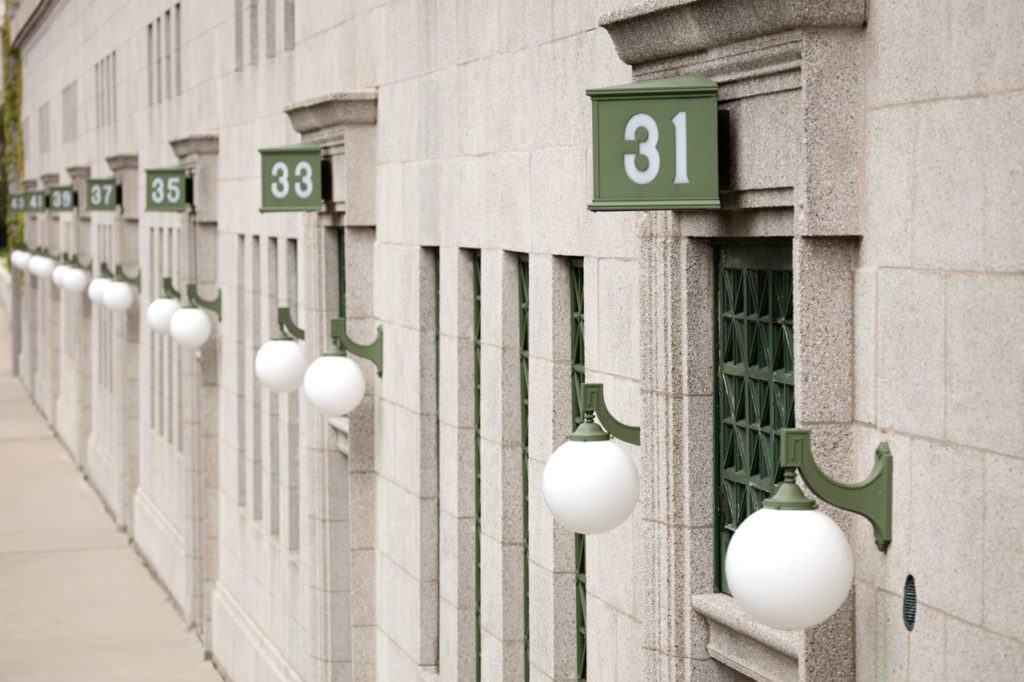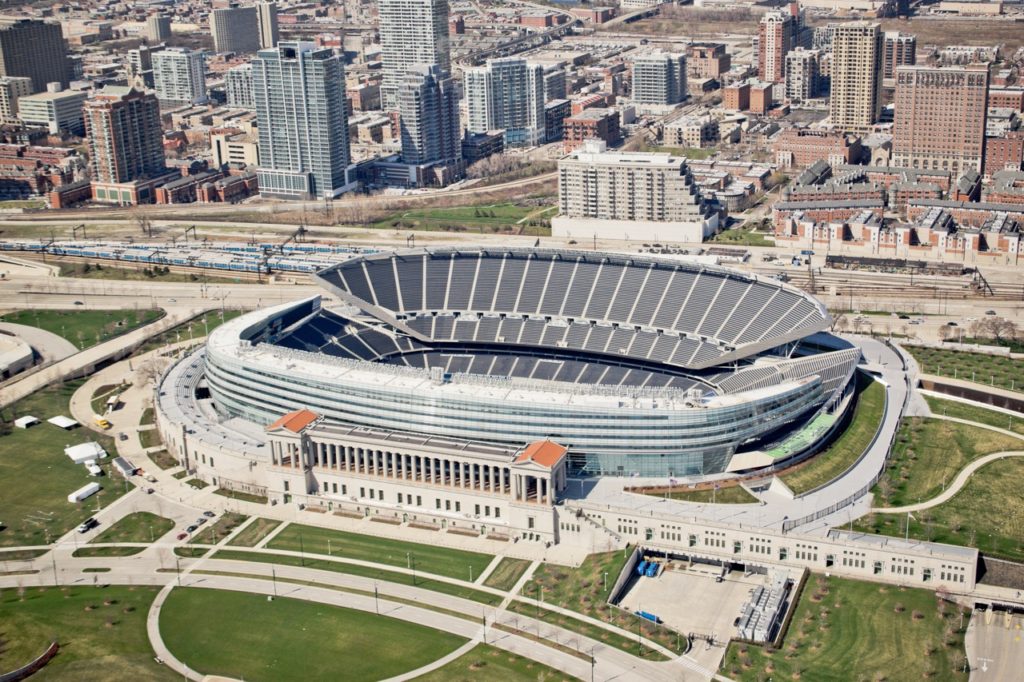Marvelous Masonry - Soldier Field
Words: Cass SternPhotos: christopherarndt, EllenMoran, franckreporter, steinphoto
Soldier Field, a Chicago landmark and one of the most iconic sports venues in the United States, demonstrates masonry's enduring strength and beauty. Opened in 1924, Soldier Field has undergone several renovations, but its original masonry work remains a focal point, blending history with modernity in its construction.
The stadium was initially built to honor American soldiers who died in wars, hence its name. The architectural design, led by Holabird & Roche, embraced the neoclassical style prevalent in early 20th-century public buildings. Indiana limestone, a popular material for monumental structures of the time, was a deliberate choice to convey a sense of grandeur and permanence. This durable stone provided the strength to support the stadium's massive colonnades and detailed facades while offering a visually appealing finish that has stood the test of time.
Indiana limestone was quarried from the state of Indiana, which is known for producing some of the highest quality limestone in the United States. Its consistent color and texture made it an ideal choice for Soldier Field. The stone's properties, including its compressive strength and workability, allowed masons to craft intricate details and large blocks that form the structural and aesthetic backbone of the stadium. The careful selection and placement of each stone piece were crucial, as they had to support not only the weight of the structure but also the dynamic loads from thousands of spectators.

The original construction techniques employed at Soldier Field involved traditional masonry methods. Masons used hand tools and simple machinery to cut, shape, and place the limestone blocks. Mortar, composed of lime, sand, and water, was used to bond the stones together. This method ensured a solid and durable connection, allowing the structure to withstand Chicago’s harsh weather conditions over the decades. The precision and craftsmanship required in this process underscored the masons' expertise and their role in creating a lasting legacy.
Hand tools used by the masons included chisels, hammers, and mallets, which were essential for shaping and detailing the limestone blocks. Pointing trowels and jointers were used to apply and smooth the mortar, ensuring even and secure joints between the stones. Plumb bobs and spirit levels helped masons ensure that each stone was placed accurately, maintaining the overall alignment and stability of the structure. Block and tackle systems were often employed to lift and position the heavier stones, demonstrating the blend of physical strength and precision engineering required in masonry work.
One specific technique used in the construction was applying the "ashlar" method, where stones were carefully cut, dressed, and placed in a regular pattern. This technique not only provided a visually appealing finish but also enhanced the structural integrity of the walls. Masons had to meticulously plan the layout, ensuring each stone fit perfectly with its neighbors, creating a seamless and sturdy façade.
In the early 2000s, Soldier Field underwent a significant renovation to modernize the facility while preserving its historic elements. This renovation, completed in 2003, was controversial but necessary to maintain the stadium's functionality and relevance. The modern design by Wood + Zapata and Lohan Caprile Goettsch architects aimed to integrate contemporary features with the original neoclassical architecture seamlessly. This challenged the masonry work, requiring innovative solutions to blend new materials with the old.

The renovation involved the construction of a new seating bowl within the original colonnades. This required extensive masonry work to ensure the new structure's stability while preserving the historical façade. High-strength concrete and steel were used with traditional masonry materials to meet modern building standards. The limestone from the original structure was meticulously cleaned, repaired, and, in some cases, replaced with new stone matching the original's properties. This painstaking process ensured that the renovated stadium retained its historical integrity while meeting contemporary needs.
Masons employed modern tools and techniques to complement traditional methods during the renovation. Power saws and diamond-tipped blades were used to cut limestone with greater precision and efficiency. Hydraulic lifts and cranes facilitated the movement and placement of heavy stone blocks, reducing the physical strain on workers and increasing the speed of construction. Additionally, laser levels and advanced measuring tools ensured even higher accuracy in placing and aligning stones, reflecting the advancements in masonry technology over the decades.
Masons played a crucial role in this renovation, showcasing their ability to adapt traditional skills to modern requirements. Integrating new materials and techniques with the existing masonry demanded a deep understanding of historical construction methods and modern engineering principles. Computer-aided design (CAD) allowed for precise planning and execution, ensuring that every stone was placed with accuracy and care. This combination of old and new highlighted masonry's versatility and enduring importance in construction.
One notable technique used during the renovation was "anchoring," where stainless steel anchors were embedded into the new concrete seating bowl and attached to the historic limestone façade. This provided additional structural support while allowing the original stonework to remain intact and visually prominent. The careful placement and securing of these anchors required both skill and precision, demonstrating the masons' expertise in blending traditional craftsmanship with modern engineering solutions.

The renovated Soldier Field now stands as a model of how historic structures can be updated without losing their original character. The stadium's masonry work continues to be a source of pride for those who contributed to its construction and renovation. It exemplifies the timeless nature of masonry, demonstrating how traditional materials and techniques can be adapted to meet modern demands while preserving historical significance.
For masonry contractors and suppliers, Soldier Field offers valuable lessons in the durability of quality materials and the importance of skilled craftsmanship. The project underscores the need for a thorough understanding of materials' properties and the ability to innovate when faced with new challenges. The successful blend of historical and modern elements in Soldier Field's renovation inspires future projects, showing that with careful planning and execution, the past and present can coexist harmoniously.
Soldier Field's masonry is a testament to the past and a bridge to the future. The enduring limestone facades and the meticulous care taken during the renovation highlight the significance of masonry in creating structures that stand the test of time. For industry professionals, Soldier Field serves as a reminder of the timeless principles of masonry – strength, durability, and beauty – and the continuous evolution of the craft to meet new challenges and standards. The story of Soldier Field is a celebration of masonry's enduring legacy and its vital role in the construction and preservation of our architectural heritage.